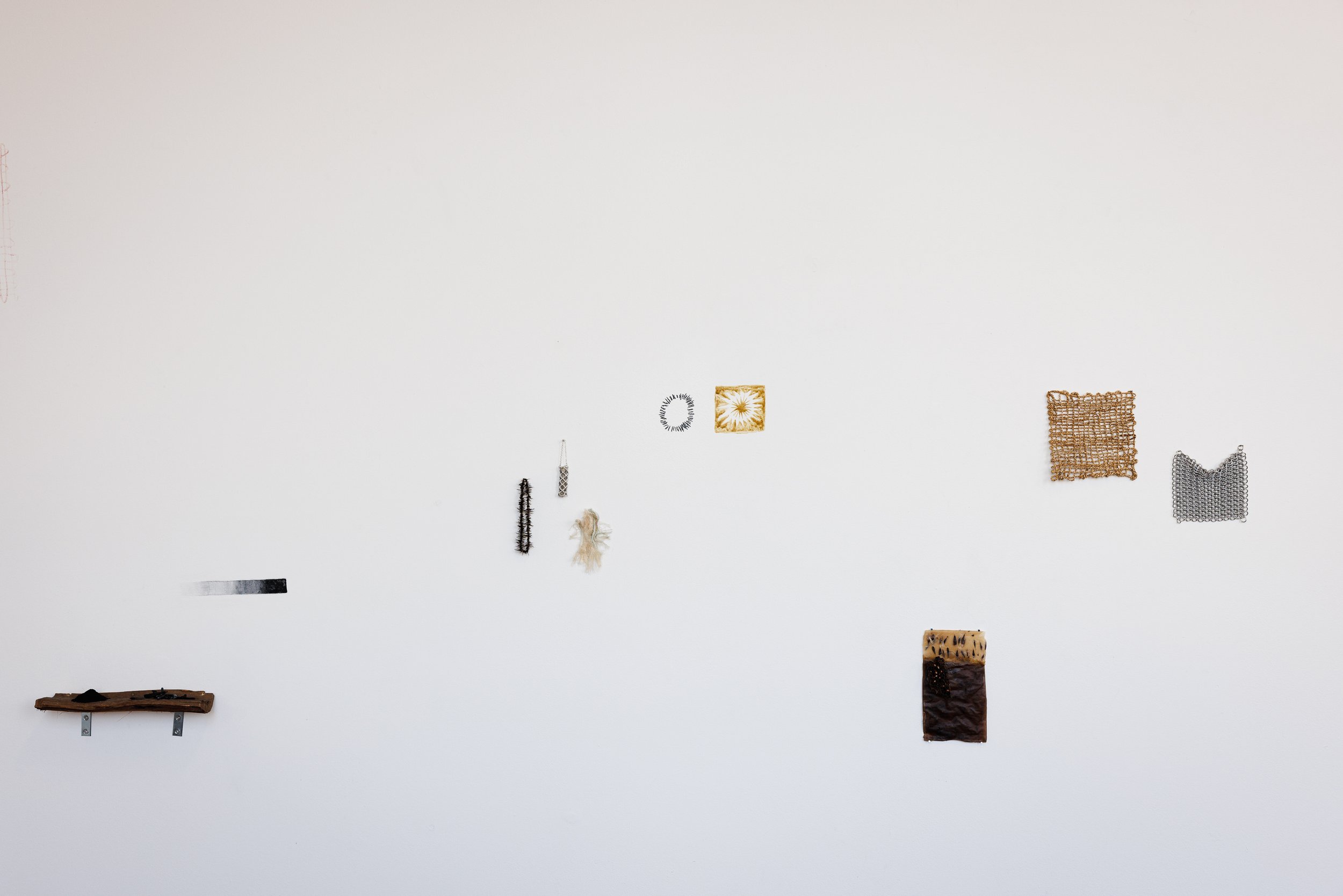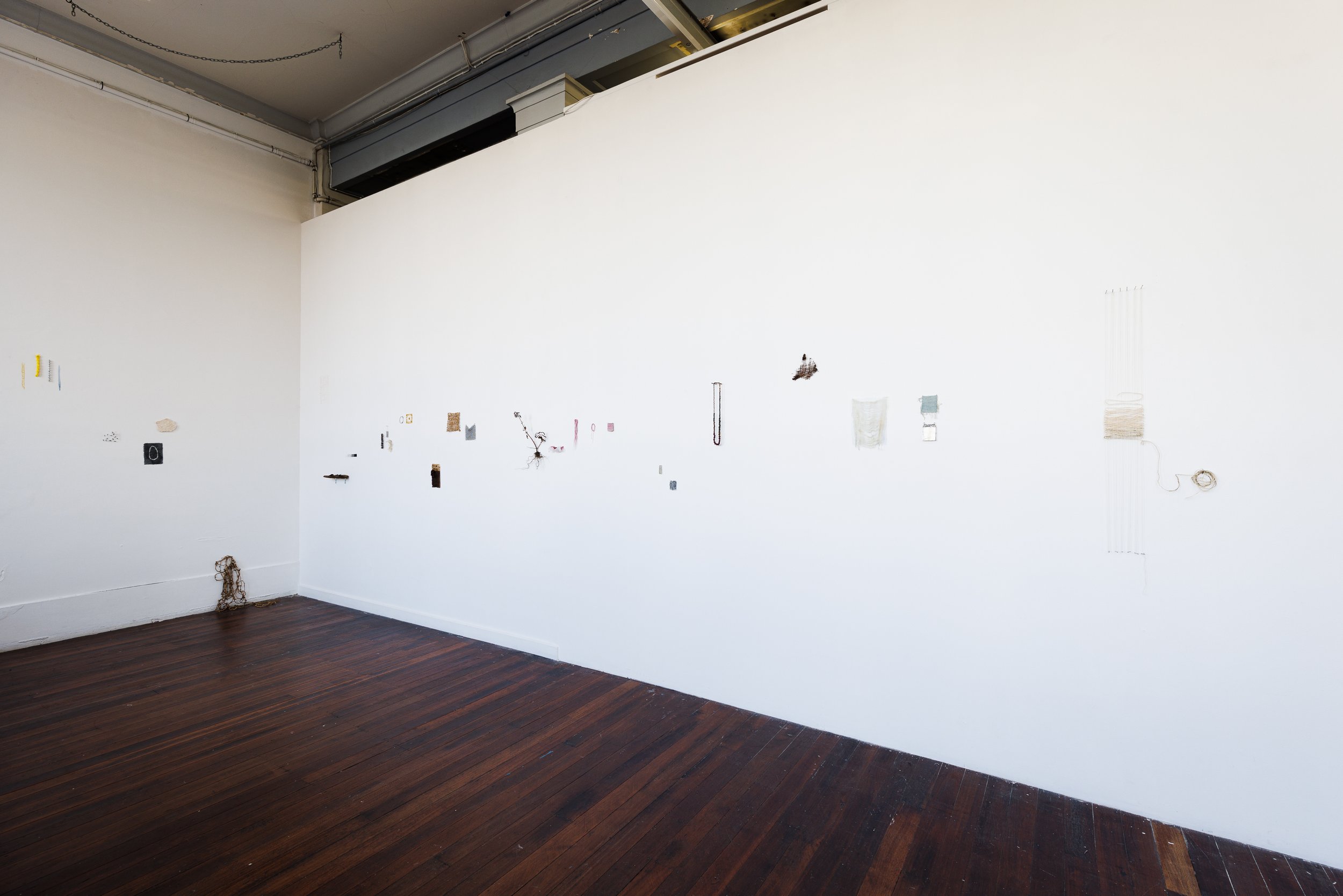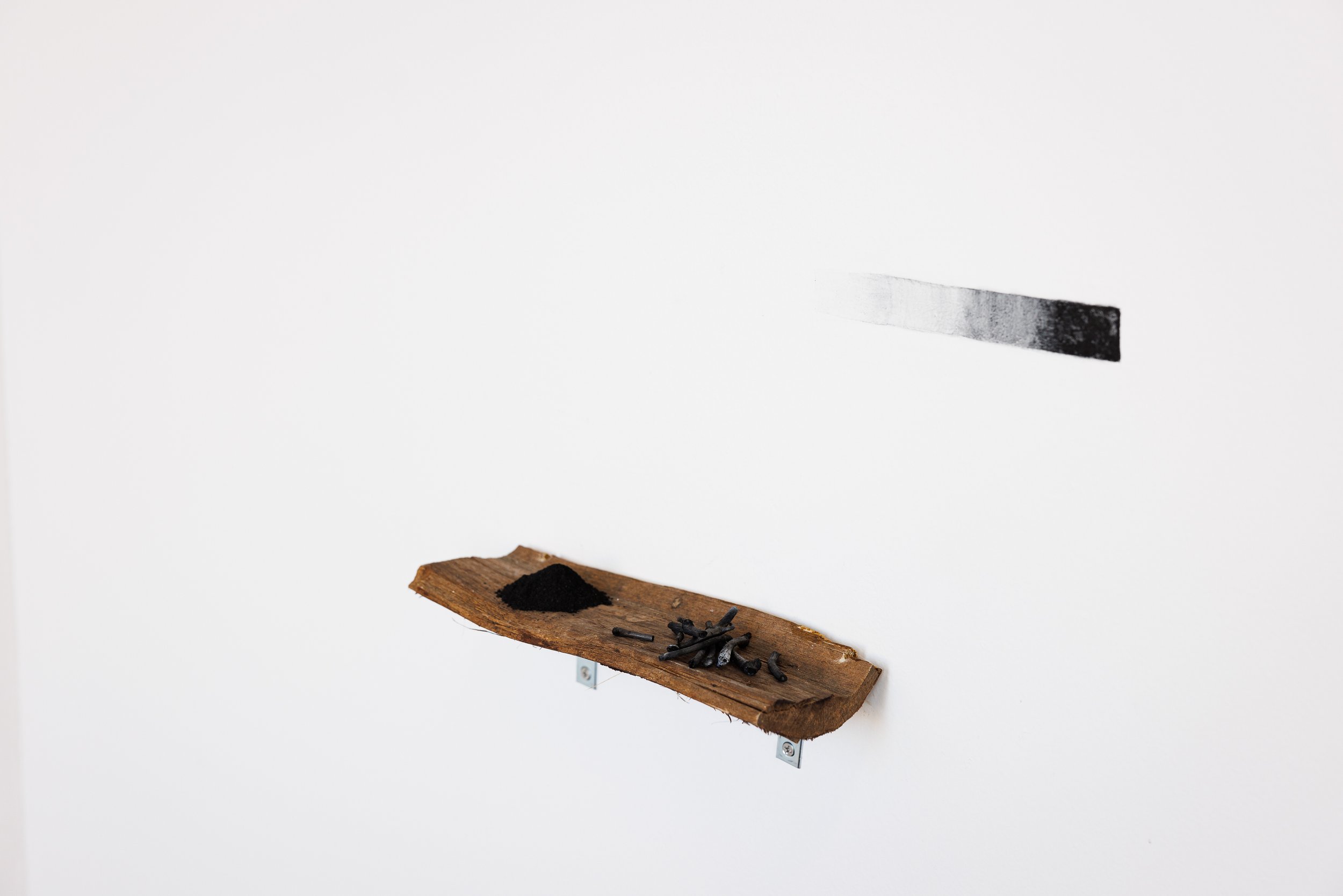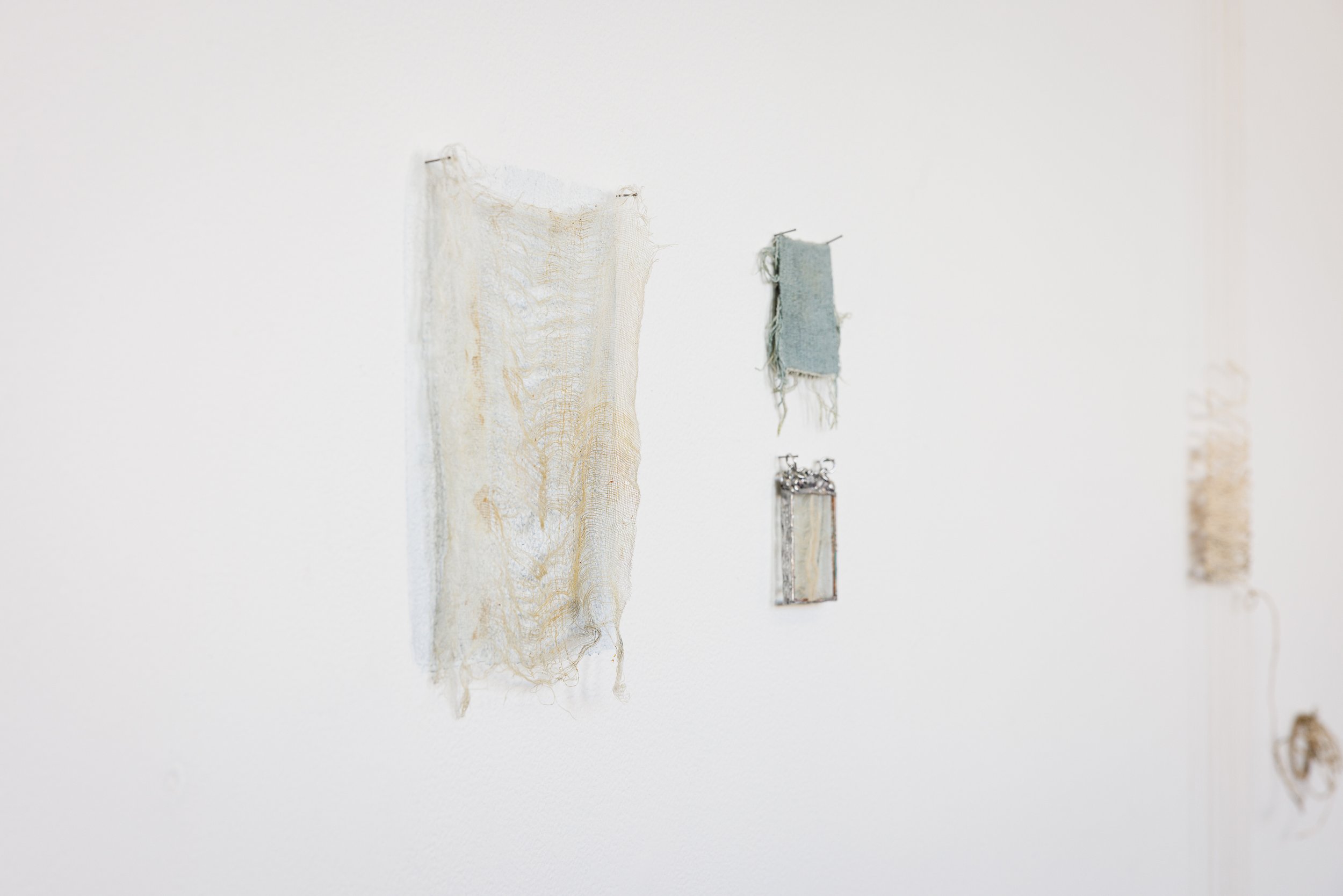THINGS TO THINK THROUGH
25 June – 29 July 2023
Installation view: Anna Dunnill and Chelsea Farquhar, Things to Think Through, 2023, Post Office Projects. Photograph: Rosina Possingham.
things to think through
Anna Dunnill & Chelsea Farquhar, Things to Think Through, 2023
Amaranth plant from Rhino Crash Repairs, beads made from flowers (Coburg: calendula, cosmos, dahlia, indigo leaf, tulip; Torrensville: bougainvillea, daisy, honeysuckle, rose, soursob), beeswax (with wax moth infestation), chain links (aluminium), cheesecloth, copper foil, cotton warp thread, firewood, glass, gum arabic, honeycomb, moth vine floss, nails (commercial, wood from fence post), palm fibre, pearls, plant pigments (Coburg: amaranth, calendula, dahlia, pomegranate, woad; Torrensville: grapevine, soursob), seeds (garlic, woad), silk thread, solder (lead, tin), string (citrus bag, corn husks, dandelions, garlic leaves), synthetic fibre from plant netting.
Exhibition documentation by Rosina Possingham.
EXHIBITION ESSAY
Resource-fullness: The artful rethinking of Anna Dunnill and Chelsea Farquhar
In the hands of Anna Dunnill and Chelsea Farquhar, citrus packaging, calendula petals, an aged fencepost, or grapevine tendrils are materials of potential. Things to Think Through revels in their artful will to find within ‘things’ myriad possibilities. Amidst the weeds and mountainous waste of our global material shambles, their seeking is an undertaking of hope, requiring not only vigorous commitment toward discovery, but importantly, rediscovery.
Through things, accompanied by research reaching back to medieval accounts, Dunnill and Farquhar are reawakening ways of our foregoers. For ritual and survival, people past gathered and experimented with materials plentiful in their vicinities. When it comes to surviving, Ursula K. Le Guin reminded us back in 1986 that we had been lugging along an arsenal of lies for too long. (1) Overblown tales have tended to prioritise human predation and fight, when mostly we’ve thrived by adapting, scrounging for useful stuffs, and crafting nifty carrier bags. More lies spread with the capitalist repackaging of ‘things’ into shiny veneered ‘products’. Dunnill and Farquhar confront these material alienations, and act as disruptors to patriarchal and consumer mindsets which have reduced thing-power to one function, one use, disposable and extricated from natural cycles. These ways of thinking have reached their endpoint.
Materials, for their part, are mostly willing participants with human interactors. As Dunnill and Farquhar’s assemblage wall of experimentations reveals, things regain vitality through tactility and transformation. With a little probing they offer ways forward; the artists have discovered for themselves the joy of working metal by hand, charcoal made using mint tins and fire, the vibrant hues extracted from weedy growths, string waiting to be twisted from grown and found fibres, and the petal origins of rosary beads.
If there has even been a time for art-led alternatives and radical material insights, it is now in the violent industrial and extractivist aftermaths of our own making. Things to Think Through honours a quieter yet formidable humanness, as thing collectors, tinkerers, and thinkers. Alongside the promise of potentials, what is most urgent about Dunnill and Farquhar’s collections of thought-through things, is their dissolution of distinctions. Things hang together in a boundaryless terrain where the functional, traditional, contemporary and aesthetic necessarily merge to find new/old ways to negotiate crucial shifts needed now (or yesterday). This is a reclamation, of things, as well as the elemental and innovative human power of thinking with materials to find ways to live differently. This is a resource-fullness of which we can all partake.
— Sera Waters
1 This is explored in Le Guin’s 1986 essay, “The Carrier Bag Theory of Fiction”.
























